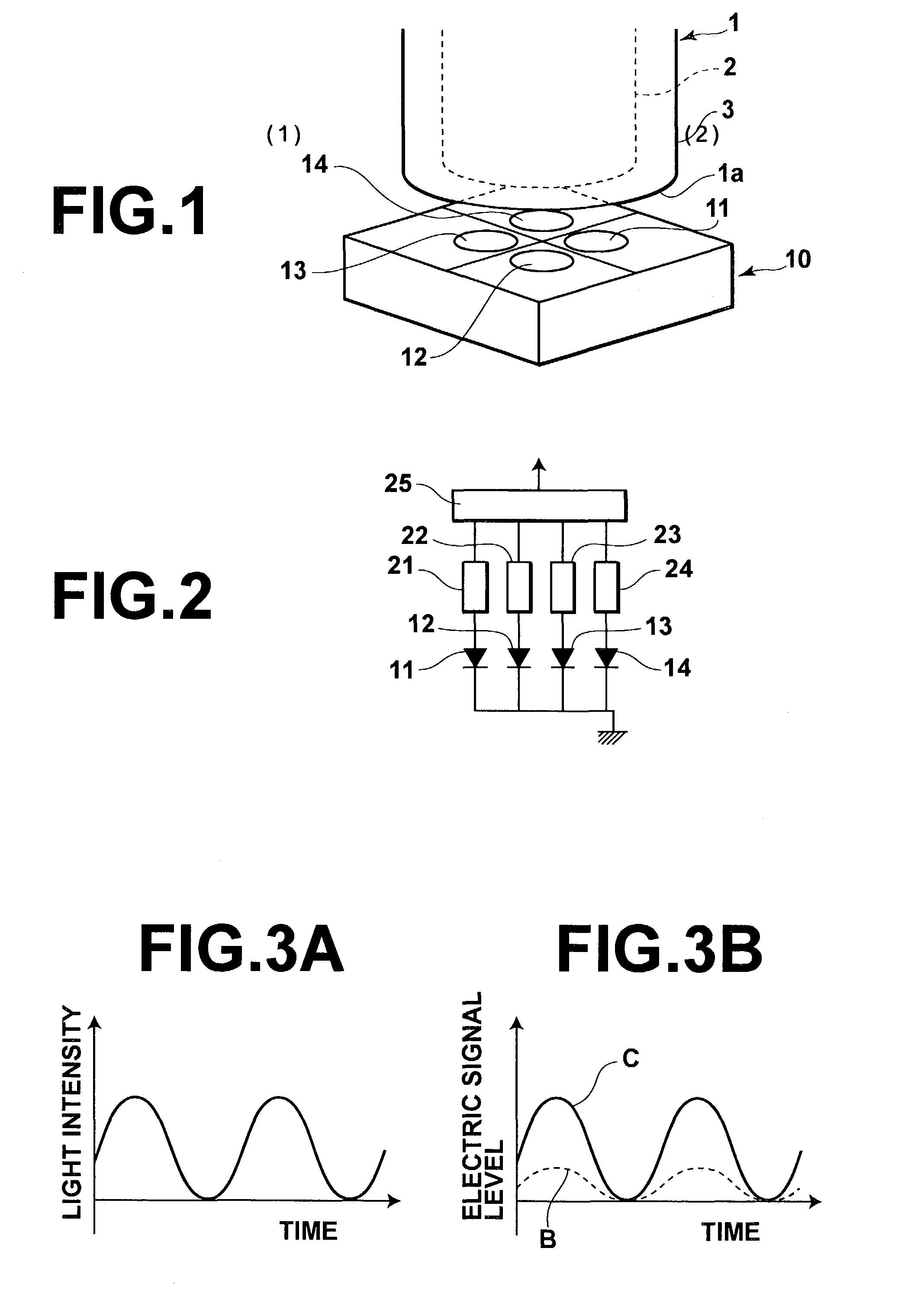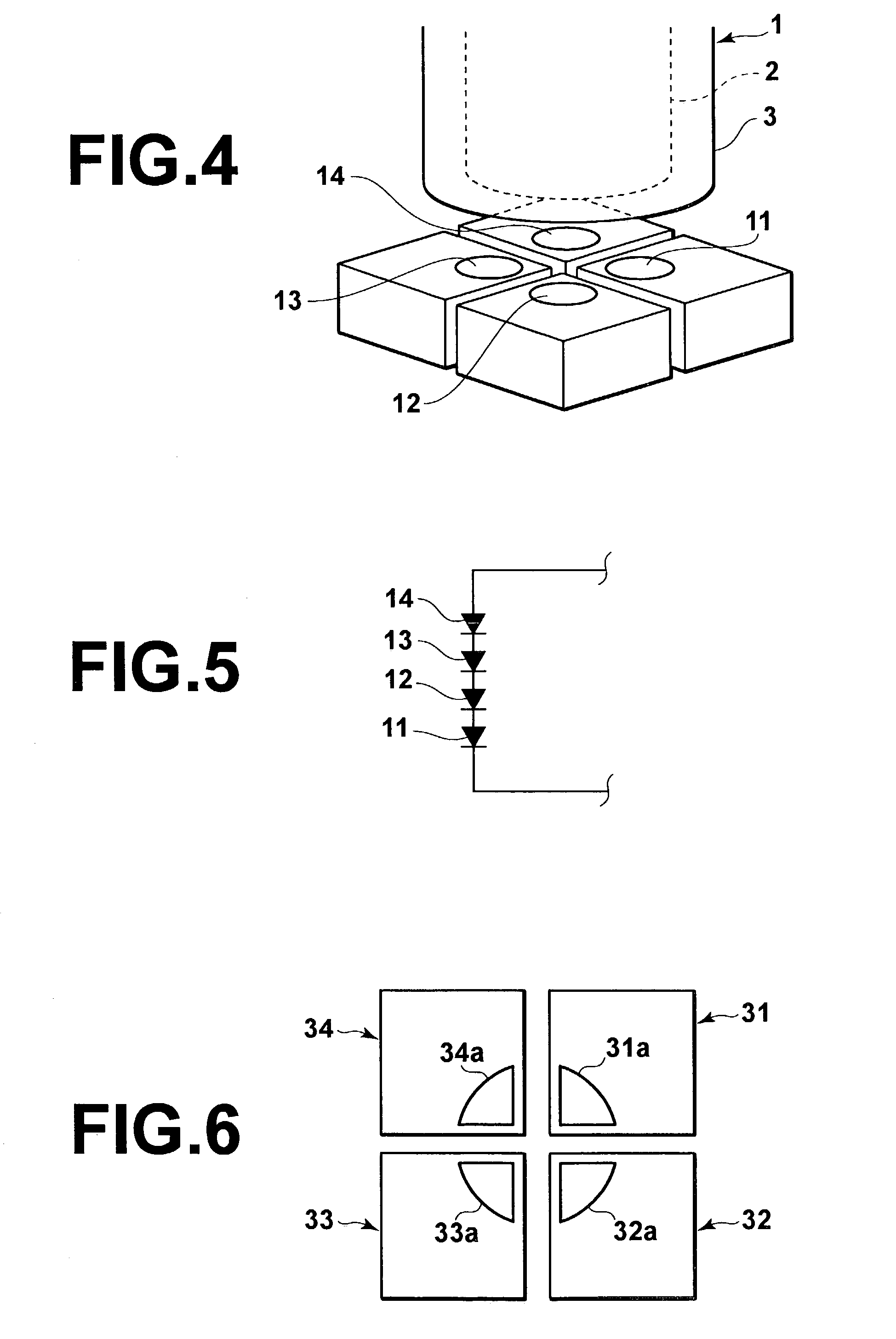Transmission apparatus using a plastic fiber
a technology of transmission apparatus and plastic fiber, which is applied in the direction of optical elements, radio frequency control devices, instruments, etc., can solve the problems of obstructing the popularization of fibers, difficult to perform fiber laying operations under ordinary environmental conditions, and obstructing the propagation of fibers, etc., to achieve the effect of high light receiving efficiency and quick response characteristics
- Summary
- Abstract
- Description
- Claims
- Application Information
AI Technical Summary
Benefits of technology
Problems solved by technology
Method used
Image
Examples
first embodiment
[0040]Specifically, for example, a successively pulsed light signal, which has a wave form as illustrated in FIG. 3A, may be inputted into the plastic fiber 1. In such cases, a light detection signal, which is obtained from the amplification of the output of each of the semiconductor light receiving devices 11, 12, 13, and 14 performed by the corresponding one of the pre-amplifiers 21, 22, 23, and 24, has a wave form B illustrated in FIG. 3B. Also, a light detection signal, which is obtained from the amplification of the total sum of the pre-amplified light detection signals of the semiconductor light receiving devices 11, 12, 13, and 14, the amplification being performed by the amplifier 25, has a wave form C illustrated in FIG. 3B and thus has a high level. Also, as described above, quick response is capable of being achieved. Therefore, the light detection signal formed by the amplifier 25 is capable of being obtained such that the logic “0” level of the light detection signal is...
second embodiment
[0044]FIG. 5 is a circuit diagram showing an electric circuit of the transmission apparatus of FIG. 4. As illustrated in FIG. 5, in the second embodiment, the semiconductor light receiving devices 11, 12, 13, and 14 are connected in series. In such cases, since the light receiving area of each of the semiconductor light receiving devices 11, 12, 13, and 14 is small, quick response is capable of being achieved. Also, the light signal having been propagated through the plastic fiber 1 is capable of being detected by the group of the four semiconductor light receiving devices 11, 12, 13, and 14. Therefore, the light receiving efficiency is capable of being kept high.
[0045]In the first and second embodiments described above, each of the light receiving sections of the semiconductor light receiving devices has the circular shape. Alternatively, each of the light receiving sections of the semiconductor light receiving devices may have an asymmetric shape. For example, as illustrated in FI...
PUM
 Login to View More
Login to View More Abstract
Description
Claims
Application Information
 Login to View More
Login to View More - R&D
- Intellectual Property
- Life Sciences
- Materials
- Tech Scout
- Unparalleled Data Quality
- Higher Quality Content
- 60% Fewer Hallucinations
Browse by: Latest US Patents, China's latest patents, Technical Efficacy Thesaurus, Application Domain, Technology Topic, Popular Technical Reports.
© 2025 PatSnap. All rights reserved.Legal|Privacy policy|Modern Slavery Act Transparency Statement|Sitemap|About US| Contact US: help@patsnap.com



